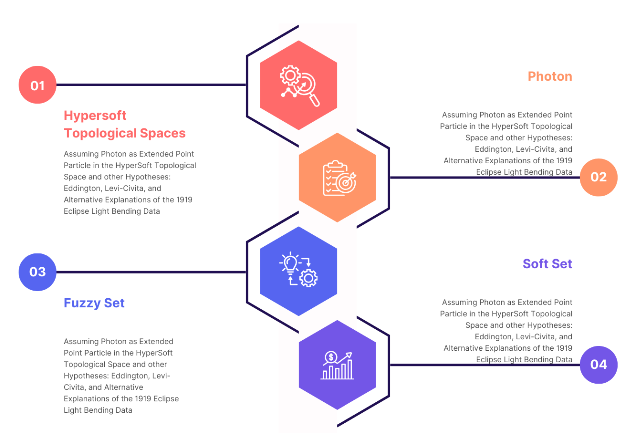Assuming Photon as Extended Point Particle in the HyperSoft Topological Space and other Hypotheses: Issues and Trend Analysis
Main Article Content
Abstract
Following our preceding article, where we discussed alternative interpretations of the advanced perihelion of Mercury, the present article revisits the 1919 solar eclipse expedition led by Arthur Eddington, which famously provided the first observational confirmation of Einstein's theory of general relativity. We focus on the deflection of starlight data obtained during the eclipse, a cornerstone of this validation. Here, we explore three alternative explanations for the observed light bending that challenge the sole attribution to general relativity. Firstly, the paper begins by arguing based on criticisms raised by Tullio Levi-Civita, a contemporary mathematician, regarding Einstein's use of pseudo-tensors in his calculations. Levi-Civita argued that this approach introduced unnecessary complexity and obscured alternative interpretations of the data. Secondly, we delve into astrophysical phenomena that could mimic the observed light deflection, based on the varying speed of light, by assuming a photon has mass. (cf. ‘t Hooft et al., Light is Heavy). Moreover, in the literature, Molodtsov initiated soft set theory as an extension of fuzzy set theory to deal with uncertainties occurring in the natural and social sciences. It attracted the attention of mathematicians as well as social scientists due to its potential to unify certain mathematical aspects and applications in decision making processes; therefore, we shall discuss a bit how to model the photon as an extended massive particle of light, possibly related to such a soft set point [15, 16]. For further exploration, it is possible to assume the crystalline lattice of subvacuum structure (cf. Gremaud) as part of hypersoft topological spaces [16, 16a]. We strongly believe that the true strength of science lies in its continuous search for evidence and refinement of existing models. Therefore, it can be expected that new data can be helpful to reevaluate these matters, for instance, in the upcoming eclipse in the next month of 2024.
Downloads
Article Details

This work is licensed under a Creative Commons Attribution 4.0 International License.





